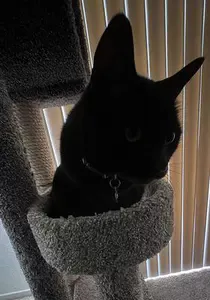How to introduce stray cat to dog and resident cat?
by Ryan
(California)
I have a little bit of a complicated situation here. In my household I have a 3-year-old female cat we got from the shelter when she was two months old. We also have a 10-year-old golden retriever female. These two get along fine.
I've been treating a female cat outside for about 1 1/2 years now. She sleeps in front of our house. She eats from her own separate food and water bowl, and she is very gentle and loving towards me.
I have been wanting to get her inside for a while, as it is very cold and I hear her getting attacked by other cats at night, but she doesn't seem to want in.
My house cat and the outside cat don't get along, but don't fight. They will see each other outside and stay away from each other. If one comes too close, they just swat the other away and that's that.
Now on to my dog. My dog is very friendly and curious about this cat, but the outside cat is absolutely terrified of my dog.
My dog will sit still wagging her tale in curiosity, but as soon as the cat sees my dog she runs. Is there any way I can introduce my animals and the outside cat in a way they can get comfortable with each other?
Comments for How to introduce stray cat to dog and resident cat?
|
||
|
||

